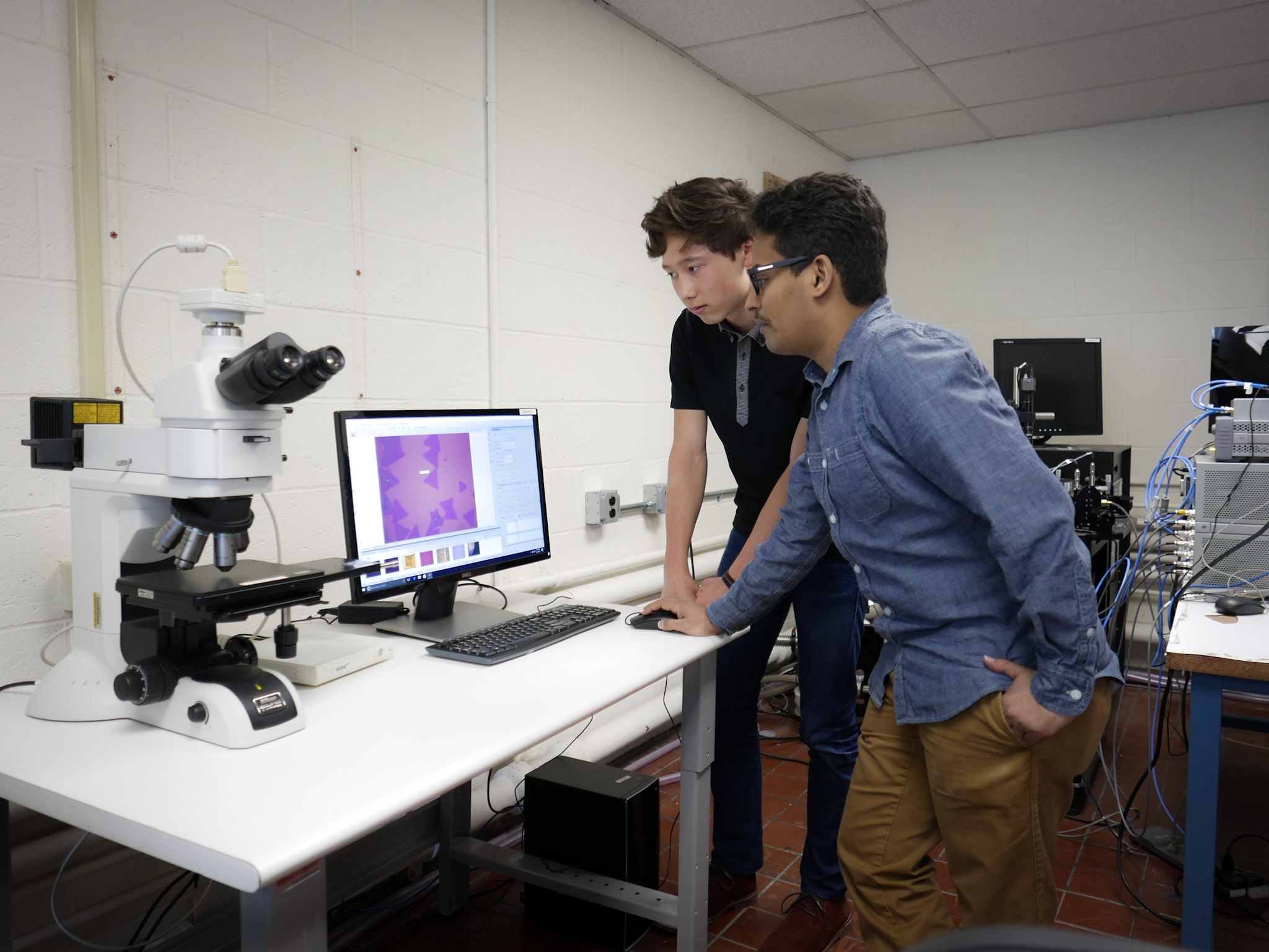High School Researcher in Nano Lab Wins First Place at NY Science & Engineering Fair

Left to right: High School Student Kristian Nilsen, Assistant Professor Davood Shahrjerdi, and Ph.D. Student Abudllah Alharbi
Working in a university-level laboratory is a challenging endeavor, especially at engineering laboratories here at NYU Tandon. Despite the very steep learning curve, high school student Kristian Nilsen has been conducting research alongside Assistant Professor and Principal Investigator Davood Shahrjerdi in the NYU Nanotechnology Lab (NYU Nano) at NYU Tandon for two years. At the recent Intel-sponsored New York State Science and Engineering Fair, the Oceanside High School senior presented his research into emerging nanotechnologies and won first place in the physical science field, securing him a spot at the Intel International Science and Engineering Fair (ISEF) in Los Angeles. Nilsen was one of 1,800 high school students selected from around the world who demonstrated their research at Intel ISEF held on May 14-19.
In the summer before his junior year, Nilsen sought out college-level research opportunities for high school students in engineering fields and contacted Shahrjerdi directly about working in his Nano Lab. While Oceanside High School coordinates a science-based research program that pairs students with high school or university research projects, other high school students can gain hands-on experience in areas like biochemistry, computer science or mechatronics through NYU Tandon's K-12 STEM education programs, such as Applied Research Innovations in Science and Engineering (ARISE) and CrEST: Creativity in Engineering, Science, and Technology.
“Many high school research projects focus on biology or genetics, but not many are in electrical engineering, so this was a very special opportunity,” Nilsen said. Over the past two years, Nilsen assisted Shahrjerdi and doctoral researchers on developing processes to create more cost-efficient, energy-efficient and thinner materials for electronic devices. With the increasing demand for more compact smartphones or other electronic devices, Shahrjerdi noted that many researchers are exploring the advantages of monolayer materials, like 2-D graphene or transition metal dichalcogenides, as opposed to silicon.
“There is a lot of excitement in various fields, from material science, to physics, to electrical engineering, to invent a new generation of low-power and high-speed electronic devices. Imagine if your handheld electronic devices can go for many days without charging,” Shahrjerdi, who is also a faculty scientist with NYU WIRELESS, said.
In his first year at the NYU Nano Lab, Nilsen worked on graphene transfer methods for creating large-scale graphene devices. After presenting his research at a local science fair, Nilsen was excited to continue exploring the fields of nanotechnology and nanomaterials, and began working on another project of Shahrjerdi’s into developing a large-scale growing process for transition metal dichalcogenides (TMDs). Using a homemade chemical vapor deposition system, the research team has been able to develop a process for creating high-quality, large-scale monolayer tungsten diselenide, which could lead the way in building smaller and more powerful electronic devices.

Kristian working with Ph.D. Student Abdullah Alharbi
In working directly with Shahrjerdi and doctoral students like Abdullah Alharbi, Nilsen is now passionate about nanotechnology and electrical engineering, and hopes to continue working on research projects at Washington University in St. Louis, where he’ll be attending in the fall. “We felt Kristian has great potential to do research in the future. Therefore, we got him actively involved in our best projects.” Shahrjerdi shared.
“What is special about working with Professor Shahrjerdi is that I didn’t just work in a background role, I actually got to work on developing methods and performing experiments hands-on,” Nilsen expressed. “For me, that was the most fun part, because my contribution did matter to the future research.”
Camila Ryder
Graduate School of Arts and Science
Master of Arts in English Literature, Class of 2018




